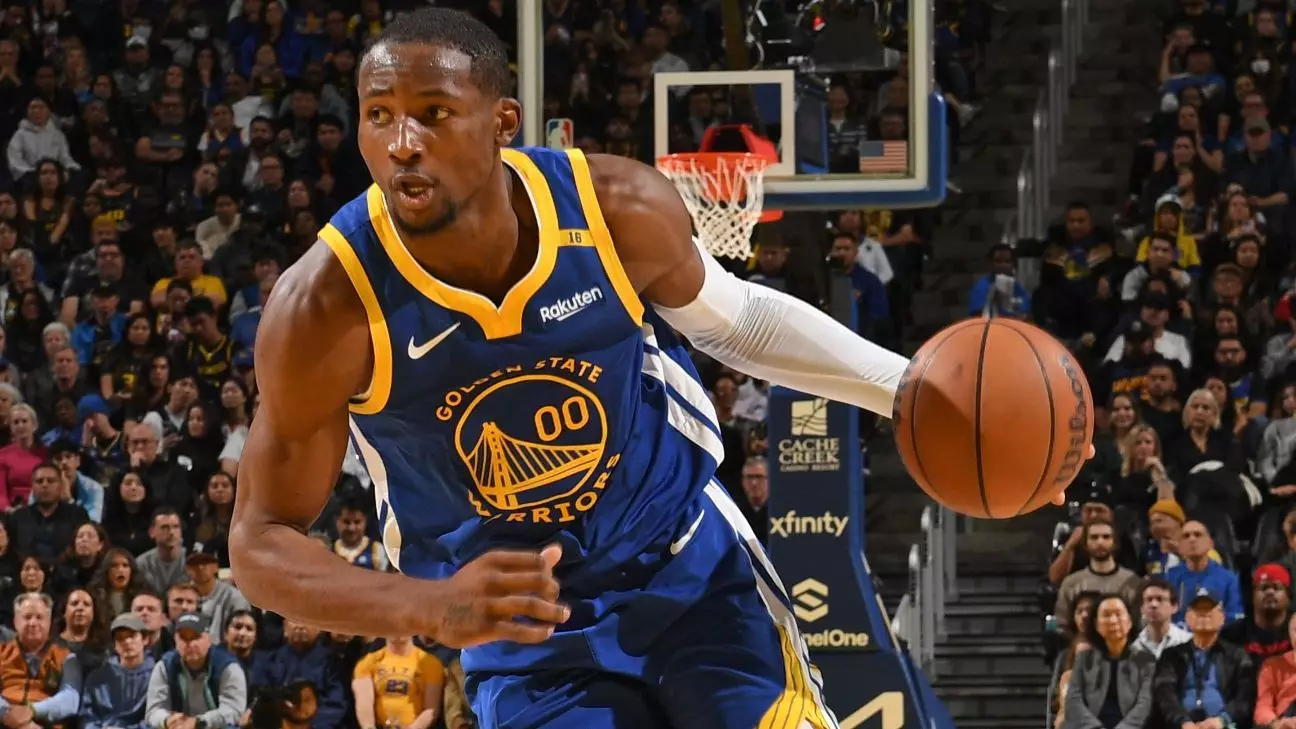The ongoing saga of Jonathan Kuminga exemplifies the complex nature of player-team negotiations in today’s NBA landscape. Unlike many young prospects eager to sign the first lucrative offer, Kuminga displays a level of independence and strategic patience that signals broader shifts in player empowerment. His decision not to rush into a contract with the Golden State Warriors suggests a desire not merely for immediate financial gain, but for a clearer view of his future role and long-term potential. This stance disrupts the Warriors’ offseason plans, placing their roster-building process on hold as they grapple with the uncertainty surrounding their young forward.
The Warriors might have perceived the recent offers as fair, yet Kuminga’s team remains unappeased. This divergence signals more than just a contract dispute; it hints at Kuminga’s aspirations to carve out a prominent, trusted place within the team’s hierarchy. Consequently, his stance has implications that extend beyond personal earnings, touching upon team chemistry, strategic planning, and even cap space management. The fact that Kuminga is considering sign-and-trade options—with teams like Phoenix and Sacramento—shows a willingness to explore external opportunities in pursuit of a more suitable environment. Yet, league sources portray these negotiations as on the fringe, with no significant breakthroughs yet in sight.
This standstill is a strategic gamble for Kuminga. While the Warriors have offered competitive starting salaries, he remains unmoved and continues seeking options that better align with his ambitions for consistent starting minutes and featured roles. His willingness to wait and explore sign-and-trade routes underscores his commitment to self-advancement, but it also reflects a broader hesitation among teams wary of overpaying young players in a sluggish free-agent market. This reluctance further complicates the Warriors’ plans, as they are forced to wait for a resolution while also trying to solidify other roster components.
The Impact on the Warriors’ Offseason Strategy
Golden State’s offseason strategy is intricately linked to Kuminga’s situation. Until a resolution is reached, the Warriors remain cautious in finalizing other roster moves, mindful of the financial flexibility needed once Kuminga’s future is secured. As the only team yet to make a significant signing or trade, they are operating against the tide of a limping market, where cap space and demand have largely dried up for restricted free agents like Kuminga.
The Warriors’ leadership, led by GM Mike Dunleavy, has remained committed to offering the most attractive deal they consider reasonable, anticipating that their current proposal is the best available. Yet the resistance from Kuminga’s side indicates a fundamental disconnect—a desire for more guaranteed playing time and a meaningful long-term role that he’s not convinced the Warriors are presently willing to promise. This tug-of-war highlights a critical dilemma: balancing short-term team success against evolving player ambitions.
Furthermore, the Warriors have a contingency plan in place—standing qualfication offers, specifically a one-year $7.9 million deal Kuminga can accept until October 1. While this arrangement grants Kuminga real flexibility and greater control over his career direction, it also means that he could opt for immediate financial security over long-term stability. This choice will ultimately shape both Kuminga’s career trajectory and the front office’s ability to rebuild or enhance their roster efficiently.
With other pieces potentially falling into place—such as Al Horford, De’Anthony Melton, and Seth Curry—the Warriors are preparing for multiple scenarios. Still, until Kuminga’s future is clear, their moves are tentative, reflective of the importance they assign to their young talent’s development and the delicate balance they seek between immediate competitiveness and future growth.
What Kuminga’s Stance Reveals About Modern NBA Player Dynamics
Kuminga’s firm stance signifies a significant shift in how young players view their value and role within esteemed franchise organizations. His willingness to hold out for a more prominent, guaranteed starting position echoes a broader trend where emerging stars refuse to accept secondary status or fallback roles. It reveals a new generation of players who prioritize clarity, involvement, and long-term control over immediate financial incentives.
His recent playoff performances—especially when he showed flashes of brilliance in critical moments—serve as proof of his potential. Yet, the NBA’s current climate makes it less hospitable for these aspirations. Restricted free agents like Kuminga find themselves at a disadvantage due to limited cap space across teams, making negotiations more cautious and often less fruitful. The league’s austerity measures and frugal approach to young talent development are stark contrasts to the era of over-the-top rookie contracts of a decade ago. Kuminga’s case exemplifies how players now seek validation through meaningful roles rather than just paychecks, signaling a paradigm shift that could reshape future contract negotiations.
His desire for clarity and a guaranteed starting role is rooted in a sense of self-awareness and self-worth that starkly contrasts the traditional approach of teams valuing youth primarily as trade assets or bench depth. For Kuminga, the risk of being relegated to a secondary role or used as a trade chip is unacceptable. He wants assurance that his talents will be recognized with consistent playing time and opportunities to lead. This stands as a testament to how modern players see their careers: not just as dollar signs but as pathways to personal growth, team influence, and legacy building.
In this context, the Warriors’ approach, emphasizing roster flexibility and roster-building, aligns with this new reality. They recognize that their future hinges on accommodating young talent’s aspirations while balancing their competitive ambitions. Kuminga’s stand not only underscores his personal ambitions but also symbolizes a wider shift in how NBA teams must operate if they want to retain the loyalty and engagement of their rising stars.
As the offseason progresses, one thing remains clear: Kuminga’s quest for a meaningful role and the battles it entails will influence not only his career but also set a precedent for player leverage and franchise priorities in the evolving landscape of professional basketball.


Leave a Reply